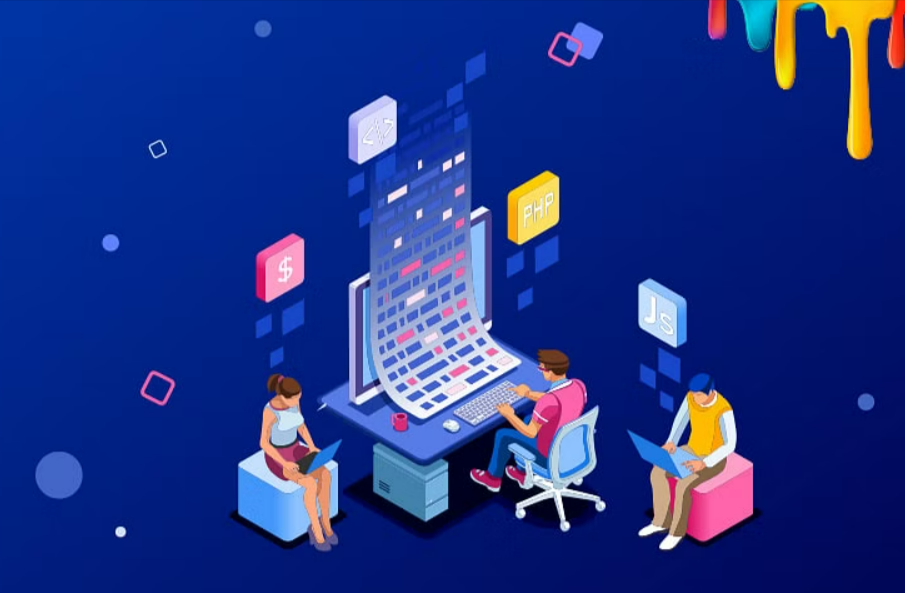Full Stack Web Developer Roles and Responsibilities

With more and more organizations – not just the big ones, but even medium and small-scale organizations – staking their claim in the cyber world, today, we have an unprecedented demand for web developers. Particularly, there is a huge demand for developers who are adept at handling both the client-side (frontend) along with the server-side (backend) of the web application (or webpage). Such developers are called full-stack developers. So, in essence, that is the definition of a full stack web developer – one who can develop both the front end and backend of a web application. Due to the huge demand for full stack developers around the world, companies no longer seek candidates with a computer science degree to work as full stack developers.
Even those who have successfully completed a Full stack Web Development Certification are considered worthy candidates if they prove their competency in the latest web development technologies. Seizing this opportunity, a lot of IT professionals and even non-IT professionals have taken up one or the other Full stack web development Bootcamp to turn their career in this promising direction. But, before diving into any career path, it is important to measure up the responsibilities falling on the professionals in that path. So, in this article, let us dive into the details of the roles and responsibilities that come under the umbrella of full stack web development.
Roles and Responsibilities of a Full Stack Developer
Many professionals have chosen full stack as their career path, and many more are already on their way to becoming one. As of today, full stack web development is one of the high-demand job titles in the IT world, primarily because of the benefits it offers to the company: faster development, cost-efficiency, and sound technical abilities, to name a few.
Some key responsibilities that full stack web developers need to fulfil are as follows:
- Develop both the front-end and back-end of visually attractive, dynamic, end-to-end, and innovative software products
- Ability to design the responsive design, user experience, user interaction, and complete architecture of a web application.
- Ability to work with servers, databases, version control systems, APIs, and third-party apps
- Offer insights to aid continuous improvement and add/remove functionalities as needed
- Devise strategies for continuous enhancement, performance optimization, scalability, and stability.
- Stay up to date with new tools, approaches, frameworks, and architectures in the web development world
- Help evolve business needs into finished products from conception to implementation
- Enable cross-platform compatibility of the developed app and fix issues during the test and production phases of development
- Manage a team of developers and communicate effectively with them for product roadmap/performance refinement
- Manage a team of developers, designers, and network managers to ensure digital outcomes are aligned with the larger business objectives
Salary scales of Full Stack Developers
The salary scales of full-stack developers are generally based on their experience and technical expertise. Full-stack developers are better suited to work in startups and SMEs as in such companies, they can easily handle the full workload and replace big teams and develop applications faster.
As per Salary.com, the average Full stack developer in the United States earns $95,151. Salaries range between $81,074 and $107, 363.
Meanwhile, in the UK, the average basic salary of a full-stack developer is £41,001 annually, according to glassdoor.co.in. This is equivalent to $53,265.
Most Popular Tech Stacks to learn to become Full Stack Developers
There are several tech stacks that are used in web and mobile app development. A tech stack is a combination of web development frameworks, languages, platforms, and tools that are used in building web applications.
The most popular tech stacks used in Full Stack development are:
MEAN Stack:
MEAN is short for MongoDB, Express.js, Angular, and Node.js. This is a complete JavaScript-based stack, and as such, it dominates the full-stack development realm. Every framework from this stack is extremely popular and enjoys huge support from a vibrant, large developer community. Using JavaScript for server-side scripting through Node.js, this JavaScript-based tech stack has changed web development significantly. Due to its many advantages, it is the most commonly used tech stack for building powerful, scalable, and visually-appealing apps.
LAMP Stack:
LAMP is the acronym for Linux, Apache, MySQL, and PHP. It is a classic tech stack, and several web applications are built using this stack. It is an enormously popular open-source stack comprising a programming language (PHP), operating system (Linux), server (Apache), and database (MySQL). Sometimes, instead of Linux as OS, developers also use Windows OS (WAMP) or Mac OS (MAMP) to build web applications.
Ruby On Rails:
This is another popular tech stack for building end-to-end applications. Ruby On Rails developers are considered experts on the front end, backend, and database parts of the web application. In this stack, Ruby is an open-source programming language, while Rails is a server-side web application framework.
Python Full Stack:
Python is one of the most widely-used modern programming languages that can be used to build faster and more scalable web apps. Therefore, Python full stack web developers are also in huge demand. Python stack is especially suitable for machine learning, and data science applications as its syntax are simple with powerful features. Python full stack usually comprises Python frameworks, such as Python, Django, Apache, and MySQL.
MERN Stack:
MERN Stack is the same as MEAN – except that Angular in MEAN is replaced by React in MERN. React is a popular JavaScript frontend library used for building interactive UIs and single-page applications. React is currently maintained by Facebook and its developer community.
Java Stack:
Java is one of the oldest and most widely used programming languages. It was the most popular language for developing web applications until recently. Java stack includes the Java suite of technologies that include core Java, servlets, REST APIs, Hibernate, JSP, Spring, and other common web technologies such as CSS, JS, HTML, and so on.
Now, we have discussed the roles and responsibilities of a full-stack web developer and the required skillset to become one.










